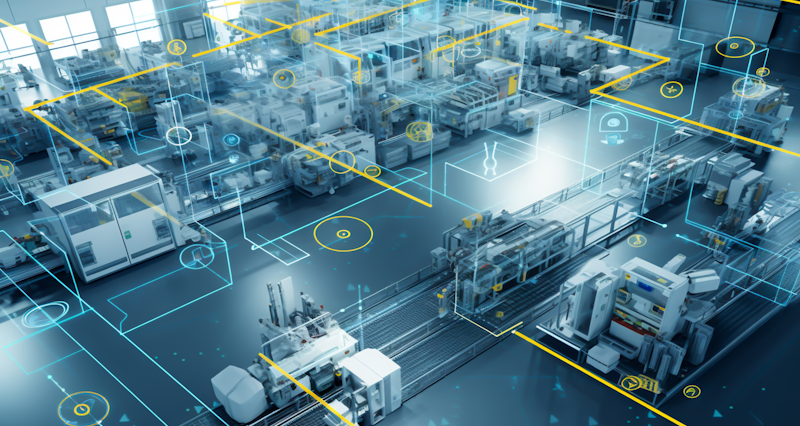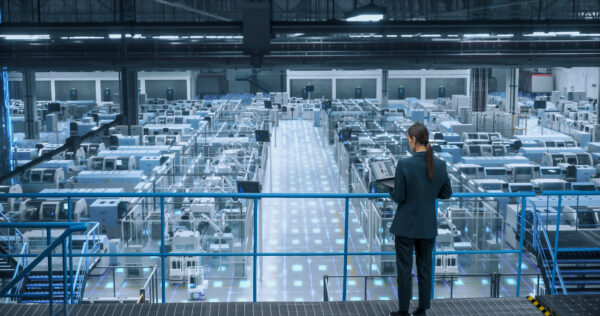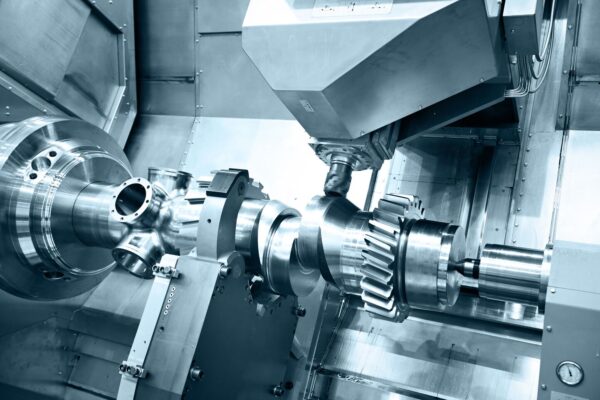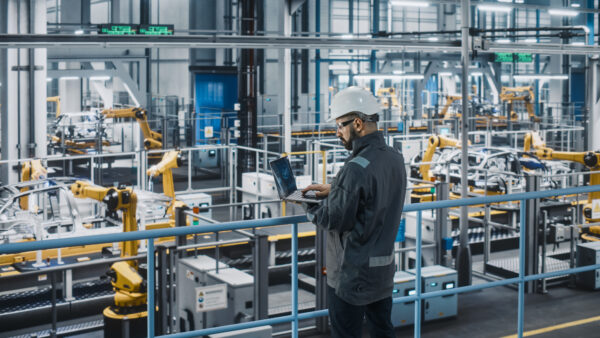What is the Industrial Metaverse?
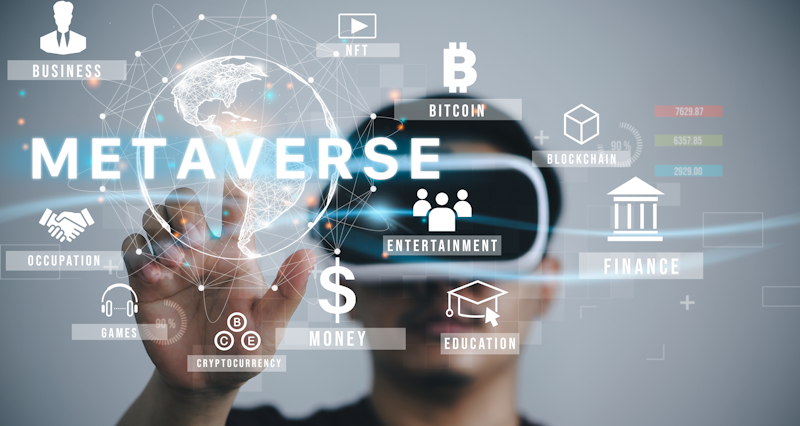
What is the industrial metaverse? That’s a question on the lips of many people right now. In this blog we’ll try to find an answer.
Imagine a spectrum with pure virtual reality on the left and physical reality on the right. Go all the way to one side and you’re in a very lonely place, a 100% virtual world. It would be like stepping into the realm of Google Maps. That might be fun for a while, but you’d be entirely alone in a space as big as the world, and unable to affect anything. You may as well not exist at all. Go all the way to the other side and you’re back home, somewhere in the physical world.
It’s those hazy fringe areas where things get interesting. The ‘inter-tidal’ zone between physical and digital is called augmented reality and it is a vital prerequisite to the industrial metaverse. Think of the Top Gun pilot’s indispensable ‘Head’s Up’ display, museums that create historical reconstructions or animations projected on top of actual exhibits.
Industrial metaverse definition
The Industrial Metaverse is a digital space that converges the physical and virtual worlds in the context of industrial applications. Leveraging Industry 4.0 technologies, it’s a curated mix of physical and virtual manufacturing processes, where real-time data, simulations, and virtual models interact. In theory, manufacturers could create their own technology stack that facilitates the interaction of systems, machines and humans, allowing complex process modelling, real-time analytics and optimisation.
For stakeholders there is value in creating detailed digital representations of complex product development, processes or facilities so that teams can experiment and optimise using digital insights validated with real measurements. For others, the immediate payoff might be projecting real time data layers projected onto the physical world so connected workers can carry out operational tasks.
The Industrial Metaverse opens up a realm of possibilities for collaboration, efficiency and innovation in manufacturing, surpassing traditional physical boundaries.
A 2023 report by research and consultancy firm Forrester gave some context – The industrial metaverse: Ignore the hype and focus on the technologies that make a difference. Forrester takes the view that the industrial metaverse is quite different to the consumer and enterprise versions of the metaverse. It’s an umbrella term for a collection of pre-existing technologies:
- Digital twin
- Augmented and virtual reality
- Computer-aided design
- Reality capture
- Internet of things
- AI and Machine Learning
- Cloud computing
The defining point of the industrial metaverse is that it allows for persistent, digital representations connected to aspects of the physical world. The precise blend of physical and digital aspects required to make an industrial metaverse is up for debate.
The origins of the industrial metaverse
When we think about the metaverse we normally think of a virtual reality space. In Neal Stephenson’s Sci-fi novel Snow Crash (1992), which is normally credited with coining the term, the metaverse is a place that you can enter from millions of access points around the world. Users put on a headset, create an avatar and they find themselves in a completely new location. In some ways it mimics the physical world. It’s a place where people socialise, conduct business, engage in tourism. This is the metaverse. On our spectrum it’s almost entirely at the virtual reality side. Stephenson’s metaverse is completely open source. It’s supplier agnostic. It’s truly collaborative in every sense.
Today, that idea would more accurately be termed the ‘consumer metaverse’. It’s a 3D representation of the internet (which was itself a new concept as he was writing the book). It’s an immersive form of social media, an online marketplace and a place to escape the limitations and disappointments of the physical world.
Enter the enterprise metaverse
As an extension of that, today we have a concept called the ‘enterprise metaverse’ which brings in the idea of workers utilising digital experiences from Microsoft Mesh, HoloLens and other similar technologies to enhance or even create entirely new online workspaces. This concept is where we really begin to see a useful blending of the virtual world and the physical world. We have moved to towards the middle of the spectrum.
The metaverse, as a concept if not as a reality, has existed for more than 30 years. But the term “industrial metaverse” is something new. Do a quick Google search and you’ll find as many definitions as there are organisations attempting a definition. Given that state of confusion, it seems wise to take a cautious approach, with a healthy dose of commonsense.
Reality capture is a key technology
Reality capture technology plays a vital role in shaping the future of the metaverse and augmented reality. By enabling the seamless and accurate digitisation of the physical world, it forms the foundation for creating accurate and up to date representations of the physical world so people can make decisions. Take the simple example of upgrading a quality inspection system – if you only have outdated CAD for your layout, then you can only consider whether a new PRESTO automated cell can be installed. If you have 3D laser survey, then you know precisely how and where it will fit into your facility.
Through technologies like 3D scanning, reality capture bridges the gap between the physical and virtual realms. It’s key to how we create a digital twin where people can make accurate decisions in the metaverse. It empowers users to interact with virtual objects and environments rooted and validated in the real world. This revolutionises how we address the challenges of productivity and rapid decision-making.
How the industrial metaverse improves collaboration
Metaverse environments, be that consumer, enterprise and industrial, need to be infinitely fluid but at the core it’s about communication and collaboration. Our industry has one foot in the physical and one in the digital worlds. While that’s had great benefits, it’s also come at cost. It’s brought about fragmentation of teams. Before, it was very easy to get a group of experts in the same room to work out solutions to problems. Remote working, especially after COVID-19 has made the situation even more complicated (The 6 trends shaping manufacturing).
The industrial metaverse holds the promise of combining human collaboration with digital engineering and manufacturing practices. This facilitates more interactive teamwork on a global scale. To succeed, we can’t limit ourselves to one single vendor platform, visualisation or dataset. Instead, applications are enabled by key technologies that can add significant value to a specific set of problems by bringing the right data, people together in a meaningful context.
The question that I’m left asking myself is this: when those technologies are brought together, do they become more than the sum of their parts?
When you take away the marketing hype, the dramatic visuals and the science fiction, the package of technologies we’re referring to as “industrial metaverse” is about seeing more, better and further. It becomes another communication method, another way to share information. It’s a way of turbo charging collaboration and leveraging data to the fullest extent we know how. We can make a hypothesis, or a prediction based on a reality capture, test and measure with a digital twin. After that we can communicate and collaborate using the very best and most advanced methods to spark ideas, share knowledge and above all progress.
It doesn’t matter what we call it, or what the definition is. The key technologies exist today, it’s down to human creativity and collaboration to make the most of them. By working in collaboration we stand of the shoulders of giants and as a result we can see further and more clearly than ever before.
For quality that touches people's lives
Hexagon’s Manufacturing Intelligence blog is your go-to source for the latest manufacturing thinking. From expert commentary to industry perspectives, it’s designed to empower leaders and professionals to make smarter decisions, drive innovation and turn ideas into impact.

